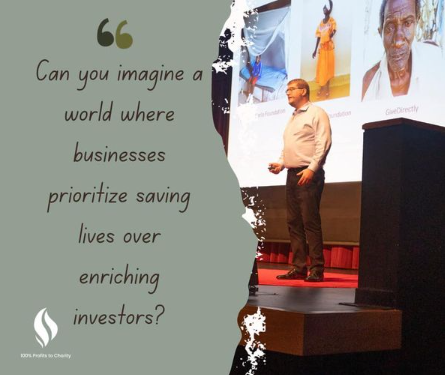The Healing Arts Initiative is a nonprofit that brings concerts and theatrical performances to hundreds of thousands of disabled, elderly, and poor people each year. Unfortunately, it has experienced its own internal drama since last year, culminating in its board of directors firing its two top staff on May 6th. Apparently, an official within this charity stole over $750,000, and arranged to have a lye attack on the organization’s executive director in order to cover her tracks.
While this charity scandal is particularly gruesome, such scandals appear systematically every few months. One recent example is the Wounded Warrior Project fiasco that came to light two months ago. Besides devastating both donors and beneficiaries of these nonprofits, these types of scandals undercut public support for the nonprofit sector as a whole.
Why do the misdeeds of one nonprofit cause mistrust of all nonprofits? The problem is the horns effect, one of the many thinking errors that are a consequence of how our brains are structured. When we dislike one member of a group, our dislike spills over to other members of that group–even if there’s no good reason to think badly of them. In other words, the Healing Arts Initiative scandal will likely reduce trust in all nonprofits—including effective ones.
Such unjustified distrust of high-quality nonprofits could undermine our society. The nonprofit sector provides social services that governments can’t or won’t, including providing food, shelter and free higher education to the poor. To continue addressing these social needs and address the distrust caused by nonprofit scandals, we need to improve our nonprofit sector.
Each of us can make a difference by becoming a more effective donor. The easiest way to do this is to take the perspective of a savvy investor and research donation options to make sure you do the most good per dollar donated.
We must also pressure nonprofits to be transparent about their activities and finances and measure the impact of their work. To do this, we must give numbers priority over emotionally compelling stories. When you are considering whether to give, let your heart be open to stories but also ask how representative those stories are of actual clients or results. This helps prevent another common thinking error called scope neglect, in which our brains fail to ensure that our emotions correspond to the actual impact made by our donations.
How would this have addressed the problems in the case of the Healing Arts Initiative? While my heart goes out to the executive director scarred for life by the lye attack, the underlying issue that brought about the attack was the embezzlement of $750,000. Imagine how many more concerts could have occurred for all those poor, elderly, and disabled people with this money! What about if this was a food bank? How many people would starve because of such thefts? Such embezzlement would not have a chance to occur if charities measured themselves by their cost effectiveness rather than the emotionally engaging nature of stories they tell to donors.
Recently, a social movement called effective altruism has been pushing the nonprofit sector to become more transparent and focus on measuring the cost effectiveness of their activities. Several effective altruist organizations, including The Life You Can Save and GiveWell, provide information to donors about the impact of various charities addressing global poverty. Some of the top picks of these charity evaluators include the Against Malaria Foundation, which protects families in the developing world against deadly malaria-carrying mosquitoes, and GiveDirectly, which transfers money directly to some of the poorest people in the world. Another organization, Animal Charity Evaluators, gives recommendations on the most effective charities to prevent animal suffering.
Crucially, these evaluative organizations, called meta-charities, do not receive any funding from organizations they are evaluating. Instead, meta-charities receive funding from donors who appreciate the services these organizations provide, allowing meta-charities to stay objective. With time and support from donors, new meta-charities will arise to evaluate other areas of nonprofit activity.
We all have the power to ensure that we can truly trust nonprofits to spend our money wisely. Doing so is vital for our society today to address the various societal needs that our governments do not address, and thus helping our society flourish.
This piece was first published in The Buffalo News.



